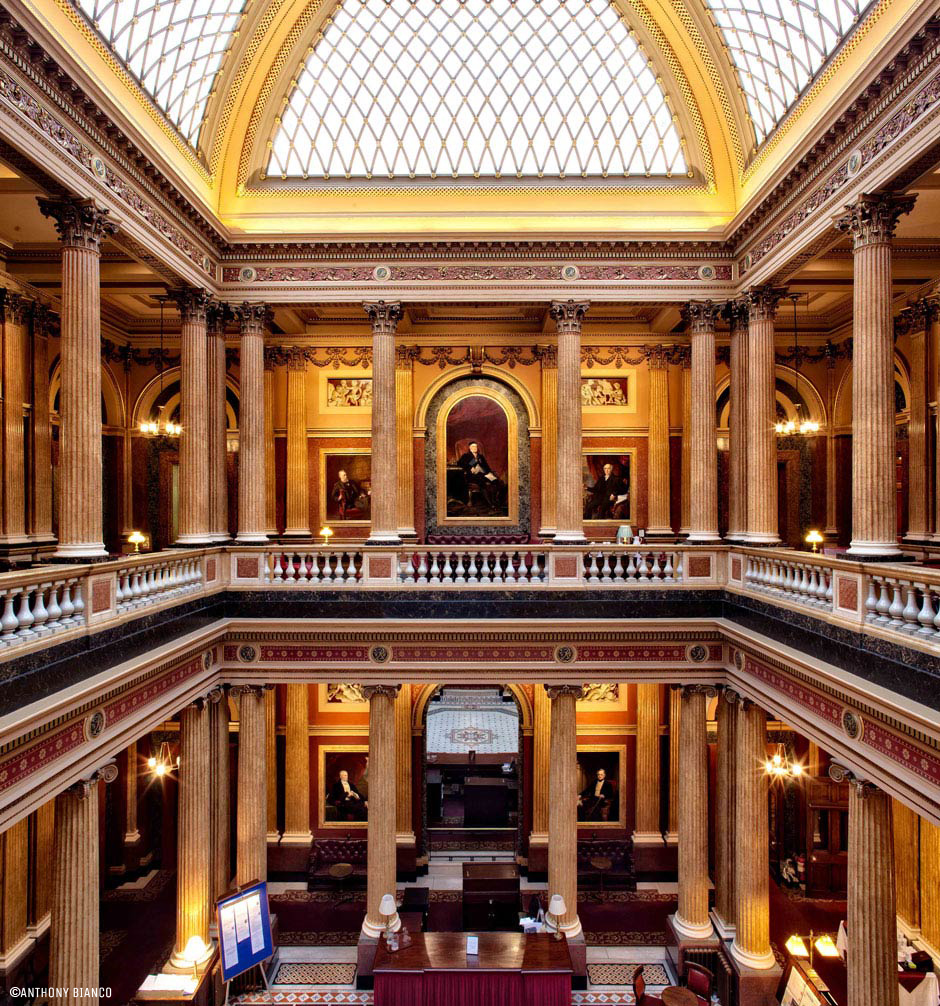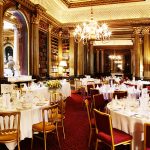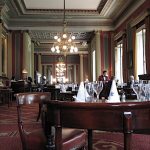
In the 1830s, the success of the Reform Act led to a huge interest in liberal politics. The traditional hangout for the Whigs (later to become the Liberal Party) was Brooks’s Club, but at the time, it had a long waiting list and no interest in increasing the number of members. Thus, a new club was formed in 1836 and named “The Reform Club” in memory of the Reform Act. The building was designed by Sir Charles Barry and was completed in 1841.
As this site is about the overall club experience, we usually try to avoid giving architectural lectures. However, it’s not always easy, as the clubhouses of St James’s are some of the most impressive buildings in London – and with the Reform Club, it’s nearly impossible to avoid. Not only because the building is so astonishing, but also because the rest of the club experience there is, to some extent, bland.
The building is said to have been inspired by Palazzo Farnese in Rome. At least in terms of the facade, that is an understatement. Without a visual reference, you’d be hard-pressed to tell whether you are looking at the Reform or the Palazzo Farnese from a little further away (the latter is slightly larger).
As you enter the building, you may have to squeeze past old ladies arguing with the porters about their mail – some older members still use the club as their primary postal address. Having navigated this modest obstacle, you enter an atrium of enormous proportions and splendour – only slightly let down by the fact that what appears to be wonderful mosaic porcelain tiles on the floor are, in fact, linoleum tiles (which, in fairness, was a posher material when installed and also has the effect of significantly reducing acoustic noise). This space also serves as a rather magnificent bar area.
On the ground floor, you will also find the dining room – or “the Coffee Room” as it is called at the Reform. The long stairs leading upstairs have enormous mirrors aligned so as to give the impression of endless space. Ionic columns support an upper gallery, where you’ll find the magnificent library and smoking room.
While other clubs were struggling during the 1990s, the Reform was prospering. It had allowed women members as early as 1983 and had attracted some very high-profile members. Today, politically neutral, it attracts members across the political spectrum.
It may be argued, however, that the club – except for the architecture – comes off as a bit devoid of character. The Garrick attracts authors and artists, the Carlton Club the enthusiastic Tories, the National Liberal Club ambassadors and senior civil servants; The In & Out attracts navy officers and posh foreign nobility, the Royal Automobile Club attracts those who want to show off their cars. The Athenaeum is the home of academia, and the Travellers Club is mostly for spies or those pursuing them. It seems that no niche was left for the Reform. You will find Liberals and Tories, authors and professors there, but it never really seems to be the home for any of them. Illustratively, a few years ago, the club was closed for a month because management agreed to hire the entire building out to Cartier as some sort of corporate venue. It is impossible to imagine something similar happening at the Carlton Club, the Garrick, or the NLC.
As a consequence, the club has seen a bit of an exodus of members. One long-standing member of some importance is said to have been joined by more than 100 members when he moved to the Saville Club (his move also incidentally de facto ended a regular security lecture event at the Reform).
06/02/2024 UPDATE: A member contacted us and informed us that the club is doing well, with a full membership list (see comment below). Certainly good news, as it is a delightful club! The parliamentary reforms of the 1830s are not very contentious these days, and the Reform Club must find its own new niche. If it does, it will be one of the most magnificent clubs in London.



This article needs an update. The Reform is thriving. Its membership list is nearly full.
The ‘long standing member of some importance’ was not nearly as important as he thought he was. Not much missed, he certainly didn’t take a hundred members with him when he left.
Thanks for the update. Your comment is now referenced in the article above. I am delighted to hear the club is doing well! It’s a magnificent place.